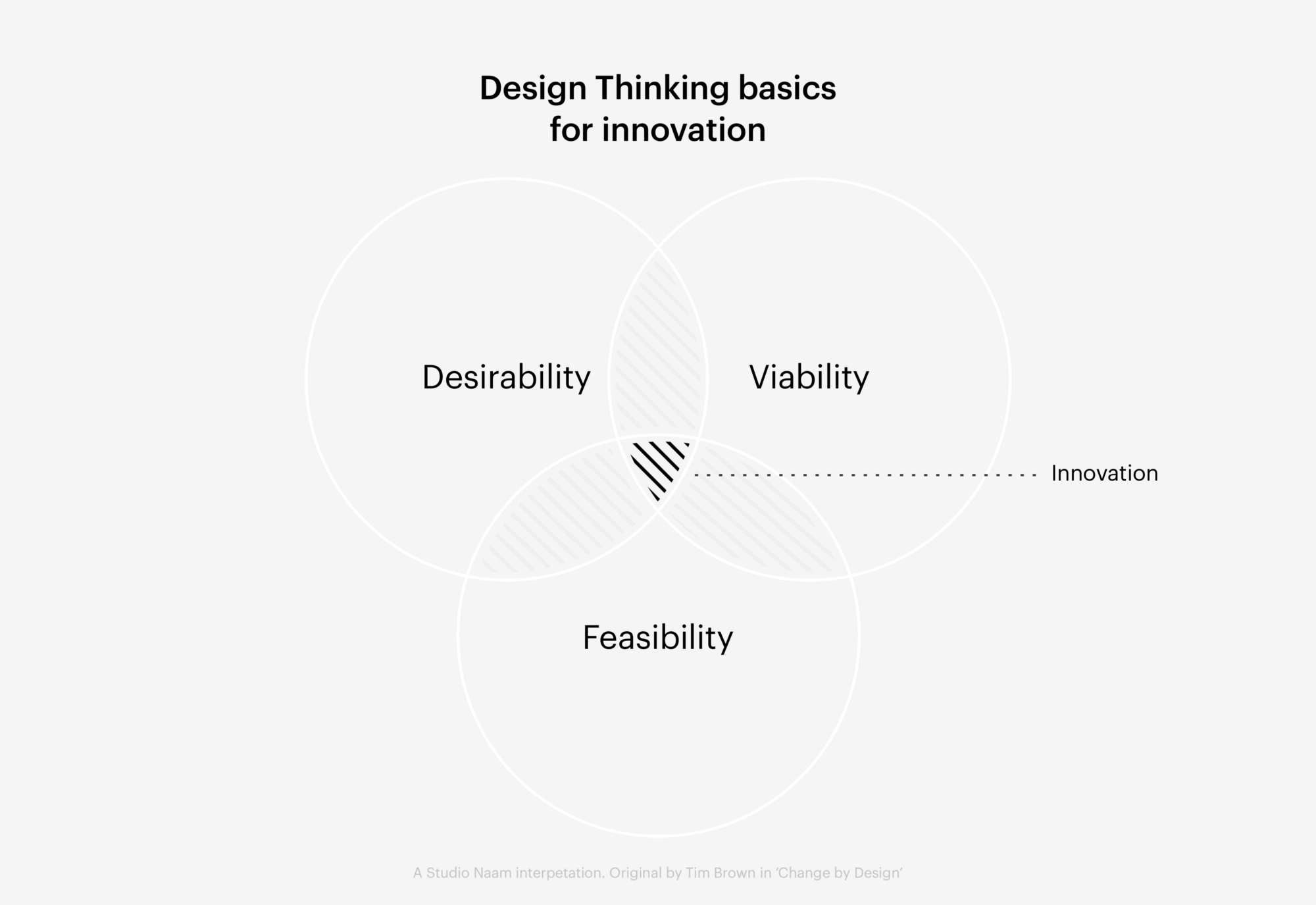
Dit artikel is enkel beschikbaar in het Engels.
Starting with a little background information — Tim Brown of IDEO coined the term Design Thinking around the same time he released a great book on the topic (2009, Change by Design — Tim Brown) in which he described Design Thinking as a system where: “A project is the vehicle in which an idea is carried from concept to reality”. Although this sounds a lot like the definition of design — they are one, but not the same — there are significant differences between design and Design Thinking.
Design Thinking in itself is a system that focusses on participation — not consumption. The whole concept is wrapped around thinking through buildingand learning by making. This results in releasing ideas — in the form of prototypes — out in the world as soon as possible to learn from their strengths and weaknesses. It consists of five important phases: Empathize, Define, Ideate, Prototype and Test.

A non-linear Design Thinking process. Original by Interaction Designer Foundation and IDEO. We added the goal in the middle. It’s the focus of every project and the element that helps us measure the quality of our ideas.
By going out into the world to observe and study behaviour, we can identify needs, understand cultures, and give a project context, which all generate insights. The kind of insights you will never gain from sitting behind a computer or being stuck in a meeting room. Human behaviour has a way of doing things to become more productive, engaging, available, or effective. In the course of that quest we constantly find new solutions without even knowing we needed them. It’s those real-life hacks and workarounds that are so incredibly interesting.
Design Thinking has also taken a closer look at incorporating a more human centered approach into the work process. It’s turned the old passive relationship between clients, users and customers into an active one. Working from the idea that the biggest impact will be achieved if everyone gets involved.
In order to work effectively and collaboratively it uses constraints that create a framework for evaluation. These constraints are best visualized in terms of three overlapping criteria for successful ideas: feasibility (technical constraints), viability (economical constraints) and desirability (what humans need) to create experiences that are meaningful, productive and profitable.
At Naam we’re both designers and Design Thinkers. Thankfully there’s no need to choose sides, because they’re both part of the same team. Design Thinking as a term emphasizes the importance of design (as a profession) within the process of building holistic experiences, products or services. The implementation of Design Thinking, and carefully selecting the right design studio for your project, will tremendously increase the possibility of a successful outcome.
To recap: Design Thinking is a human centred tool to think big and observe, find insights, and engage through mutual understanding. It’s a coming together of different skill-sets that creates a collaborative environment where ideas and insights are shared. It’s here that designers work together with engineers, managers, doctors, scientists, and the (not so) average Joe, to find new ideas in places otherwise overlooked. It’s great for times that we have to anticipate future roadblocks, create challenging holistic experiences, or look for new innovative ways that don’t fit into an existing solution. The possibilities of Design Thinking as a system are endless, it’s the implementation that counts.
In the end both designers and Design Thinkers are looking for solutions that create experiences which are better, smarter, more empathetic, healthier, easier to use, and even more profitable.
If you — after reading this article, of course — already suspect that you are in need of our services, feel free to reach out! We are always happy to help. For a sneak peek; check this article to read about our introduction process.